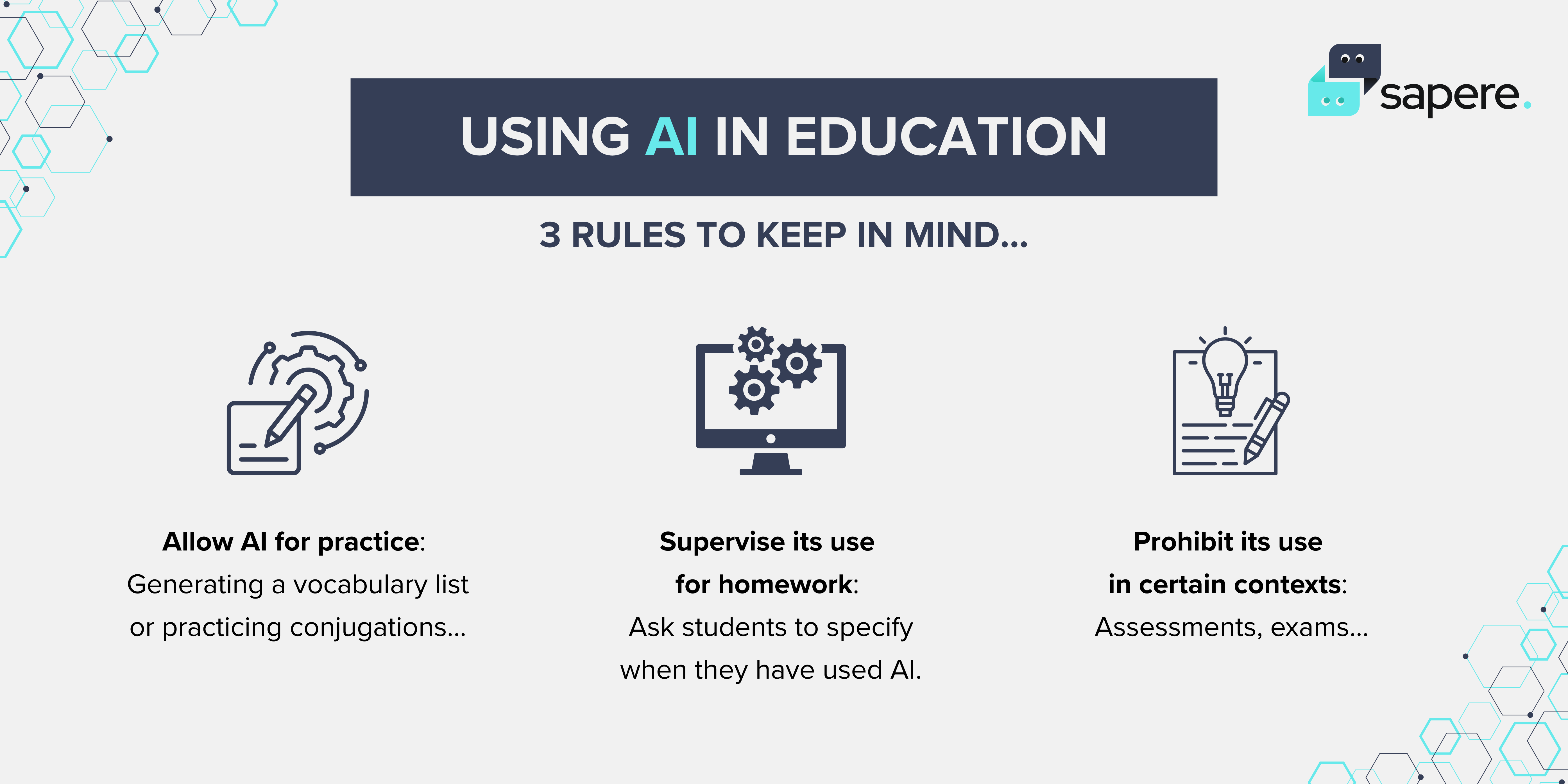Table of Contents
How Can We Encourage Students to Use AI Critically and Responsibly?
Sapere's team

Artificial intelligence (AI) is profoundly transforming the world of education. Tools such as ChatGPT, Grammarly, and learning platforms such as Sapere are finding their way into classrooms and homes. For students, these technologies are a valuable aid, saving time, simplifying access to information, improving written work, and providing personalized support.
But this technological revolution also raises new challenges. How can we ensure that AI does not become a substitute for thinking? How can we avoid plagiarism, errors, and bias? Find out how Sapere aims to encourage critical and responsible use of AI by students.
Understanding the advantages and limitations of AI
What is artificial intelligence? To use AI wisely, students must first understand how it works and its limitations. Generative AI relies on statistical models that produce probable responses from huge text databases.
Advantages: accelerated learning, personalization, creativity.
Limitations: factual errors (hallucinations), cultural biases, lack of real understanding of context.
In some cases, AI can give false information, for example, by referring to a digital tool that has not existed for several years. If it cannot find any information online about its disappearance, then as far as it is concerned, the tool still exists.
Example in language learning
A student learning French as a second language can use AI to summarize a text in French, ask for an explanation of vocabulary, or translate a sentence. However, they must learn to recognize approximate translations and correct cultural nuances that AI may misunderstand.
This is where their teacher can make a difference by offering more targeted vocabulary, or even slang words.
👉 Key takeaway: AI is a powerful but imperfect support tool. It cannot replace critical thinking or regular practice.
Develop critical thinking skills when reviewing generated responses
AI should be used as a starting point, not as absolute truth. Students should be trained to systematically question the responses generated:
Check the accuracy of the suggested sentences.
Cross-reference with a dictionary or textbook.
Look for several possible formulations.
Ask yourself if the suggested phrase sounds natural to a native speaker.
Example in language learning
An English student might ask the AI: “Give me three ways to say I'm tired.” “ The AI might suggest ”I'm tired,“ ”I'm exhausted,“ and ”I'm worn out." The student must then learn in which context each expression is appropriate (formal, informal, familiar).
This approach develops critical thinking and enriches vocabulary with discernment.

Establish clear rules for use
AI is a relatively new tool, and we are still learning how it works and what its limitations are. To prevent misuse, teachers and schools must define a specific framework:
Allow AI for practice: for example, generating a vocabulary list or practicing conjugations.
Supervise its use for homework: ask students to specify when they have used AI.
Prohibit its use in certain contexts: assessments, exams, or assignments that should reflect only the learner's level.
Example in language learning
In a Spanish class, a teacher may allow the use of AI to prepare a simulated dialogue (at a restaurant, while traveling, etc.), but require the student to rewrite the sentences in their own words to avoid dependency and verify comprehension.
Promoting AI as a collaboration tool
Our relationship with artificial intelligence cannot be one-sided or an end in itself. Questioning AI should only be one step in the educational journey. AI becomes a partner in reflection when it is used to stimulate creativity and diversify learning practices:
Generate interactive dialogues to practice conversation.
Create vocabulary or grammar quizzes adapted to the level.
Simulate everyday situations (buying a train ticket, ordering at a restaurant).
Offer quick corrections to written text, while explaining the errors.
It is to provide this added value that Sapere emphasizes collaboration with a teacher, so that the exercises or texts generated are part of a broader reflection. As we know, it is difficult to learn a language using only an app: it is better to combine the app with a few online lessons given by a qualified teacher.
Example in language learning
A German student can write a short personal presentation, then ask the AI to correct the errors and provide a grammatical explanation. They don't just copy the correction: they learn to understand their mistakes and make lasting progress.

Training in digital ethics
Rather than banning AI altogether, it is recommended that students be trained to use it responsibly. Responsible use of AI requires awareness of ethical issues:
Respect for personal data: avoid sharing sensitive information in tools.
Understanding cultural biases: AI can sometimes produce stereotypical or non-inclusive translations.
Transparency: mention when AI has been used to generate text or translation.
Example in language learning
A student who uses AI to write an essay in English must indicate in their methodology that they have used this tool, but also demonstrate that they have personalized and verified the content. This prevents plagiarism and encourages academic responsibility.
In conclusion, encouraging students to use AI critically and responsibly, particularly in language learning, teaches them to take advantage of technology without losing their intellectual autonomy. AI can become a powerful educational partner if it is used to stimulate reflection, enrich practice, and strengthen critical thinking.
By combining innovation and supervision, AI will not be a crutch that weakens learning, but rather a lever that opens up new perspectives in education.



